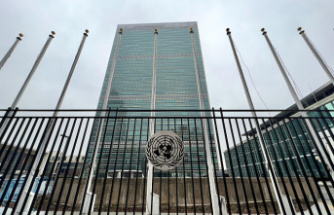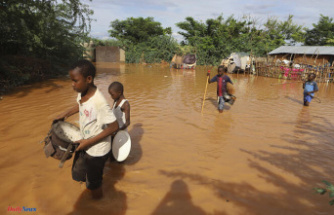The volcano that this Sunday was born in the cow's head area, in the municipality of El Paso de la Canary Island of La Palma, is believed to have eight eruptive mouths that emit lava. Lava wash at first did not advance in a very fast way, said Involcan spokesman, David Calvo.
The spokesman of the Canary Islands Volcanological Institute (INVOLCAN) has indicated that some mouths emit lava with more force than others, and explained that the first hours of eruption are crucial to understand how the eruptive process will be developed.
In the first few hours you will try to determine how much material comes out of the volcano, how many meters per second it emits, and also see the signs you send by means of the gases it emits, to know if the magma is exhausted or if it will continue to emit.
Later, other information specified that the lava advanced 700 meters per hour. In addition, two separate fissures were detected about 200 meters and eight mouths, although at first only seven were accounted for.
Calvo has stated that the volcano has come out in an area near two ravines, so it may be lava in its search of the coast, which is far away but it is the exit that has lava.
A process that will take several days, since lava does not advance at a lot of speed, something that serves the experts to see its composition, has commented on the spokesman for the Canary Islands Volcanological Institute.
Has also indicated that the lava leaving this volcano is very typical in the Canary Islands, and moves almost to a person's passage, and added that it is a stonbolian fissural eruption, and very similar, for now, to which in 1971 occurred in Teenguía (La Palma).
Involcing equipment Featured in the area have been able to take thermal images of the castings and determine that they have a temperature of 1,075 degrees Celsius. The lava casts that for hours descended by the slopes of the Municipality of El Paso (La Palma) from the volcano that has exploded this Sunday in the cow head area advance, in the middle of its trajectory, approximately 700 meters per hour.
For its part, the Geologist of the CSIC Vicente Soler has declared the Canarian television that the lava that comes out of the three eruptive mouths of La Palma will soon reach the sea, given "the rapid advance" that follows. "It will do it sooner than later."
The Director of the Geoscience Group Barcelona, the CSIC, the Vulcanologist Joan Martín, has highlighted EFE that the volcanic eruption that this Sunday has occurred on the island of La Palma is "normal", of which there has been historically in Canarias, and It has added that, by the data you have, it could last at a long time a couple of months.
Joan Martí has indicated that it is a stonbolian eruption, of little evolved magma, in which the biggest problem can be the gases that come out with magma. Lava possibly reaches the sea, as has occurred on other occasions in La Palma, and Joan Marti has considered that the duration of eruption can be a couple of weeks but also a couple of months.
The greatest or lesser speed of the progress of the castings will depend on the viscosity of the lava, that is, its composition, and apparently so far it is more fluid than in other volcanoes, but not as much as in those of Hawaii. The casts that are being observed from this afternoon in La Palma have the dark and dense aspect of the classic Malpaís de Canarias.
The advantage of this situation is that it is eruptions that, in principle, do not entail danger, due to the fact that the lava is relatively slow and its area of action is not very large and, above all, because it is channeled by the topography , Which is an advantage, Joan Martí explained.
He has commented that the explosive part is not very important in this case and the little piroclast that is observed will accumulate in the exit zone. The only problem can be the gases that escape with magma and that can be derived from sulfur and CO2, the last of which it is not noticeable, but it can cause breathing problems, Joan Martí has warned.
There could be another problem if there is any explosive phase of more intensity and that launch ash that runs a higher area and affect, for example, to the airport, but for that we have to wait to see evolution.
Date Of Update: 21 September 2021, 18:10











